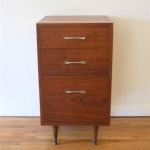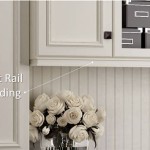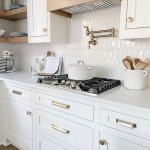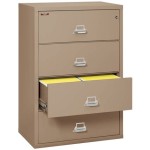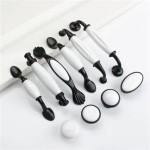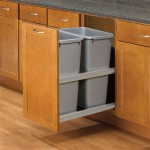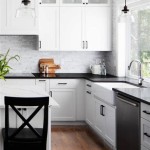Under Cabinet White Range Hood: Illumination, Ventilation, and Aesthetic Integration
The under cabinet white range hood represents a common, yet crucial appliance in modern kitchen design. Serving as a functional workhorse, it quietly performs the vital task of removing airborne grease, smoke, odors, and heat generated during cooking. Its white finish, often chosen for its versatility and ability to blend seamlessly with various kitchen aesthetics, makes it a popular selection for homeowners and designers alike. Understanding the nuances of under cabinet white range hoods, from their operational principles to the available features and installation considerations, is essential for making an informed purchase decision.
The primary function of a range hood is to maintain a clean and healthy kitchen environment. Cooking activities inherently release a variety of contaminants into the air. These include grease splatters, smoke particles from burning food, steam from boiling liquids, and volatile organic compounds (VOCs) released from heated oils and spices. Without adequate ventilation, these substances can accumulate, leading to unpleasant odors, sticky residue on surfaces, and potentially harmful air quality. A range hood effectively addresses these issues by drawing the contaminated air upwards and either filtering it and recirculating it back into the kitchen or exhausting it outside the home.
The effectiveness of a range hood is directly related to its cubic feet per minute (CFM) rating. CFM measures the volume of air the hood can move per minute. A higher CFM rating indicates a more powerful ventilation system capable of handling greater volumes of cooking exhaust. Determining the appropriate CFM for a kitchen depends on several factors, including the size of the cooking surface, the type of cooking appliances used (e.g., gas or electric), and the overall size of the kitchen. As a general guideline, it is recommended to have at least 100 CFM for every linear foot of range width. Therefore, a 30-inch range would ideally require a range hood with a CFM rating of at least 250, while a 36-inch range would benefit from a CFM of 300 or higher. Local building codes may also specify minimum CFM requirements for range hoods.
Beyond its ventilation capabilities, an under cabinet white range hood also provides crucial task lighting for the cooking surface. Adequate lighting is essential for safe and precise food preparation. Most range hoods incorporate integrated lighting systems, typically using halogen, LED, or incandescent bulbs. LED lighting is increasingly favored for its energy efficiency, long lifespan, and cool operating temperature. The placement of the lights is strategically designed to illuminate the entire cooking area, reducing shadows and improving visibility. The color temperature of the light is also an important consideration; a warm white light (around 2700-3000K) provides a comfortable and inviting ambiance, while a cooler white light (around 3500-4000K) offers better clarity and contrast.
Understanding Ventilation Options: Ducted vs. Ductless
One of the key decisions when selecting an under cabinet white range hood is whether to opt for a ducted or ductless model. These two types of range hoods employ different mechanisms for removing contaminants from the air, each with its own advantages and disadvantages.
Ducted range hoods, also known as vented range hoods, exhaust air outside the home through a ductwork system. This system typically connects the range hood to an exterior wall or the roof. Ducted range hoods are generally considered more effective at removing odors, smoke, grease, and moisture from the kitchen, as they completely eliminate these substances from the indoor environment. They are particularly well-suited for kitchens where heavy cooking is frequent, or where maintaining optimal air quality is a high priority. The installation of a ducted range hood requires careful planning and execution to ensure proper ductwork installation and sealing. Poorly installed ductwork can result in reduced airflow and increased noise levels. Factors to consider include the length and diameter of the ductwork, the number of bends, and the presence of any obstructions. Local building codes often specify requirements for ductwork materials and installation practices.
Ductless range hoods, also known as recirculating range hoods, do not vent air outside. Instead, they draw air through a filter system that removes grease, odors, and smoke particles. The filtered air is then recirculated back into the kitchen. Ductless range hoods are generally easier and less expensive to install than ducted models, as they do not require ductwork. They are a suitable option for kitchens where ductwork is impractical or impossible to install, such as in apartments or condominiums. However, ductless range hoods are less effective at removing moisture and heat than ducted models. The filters in ductless range hoods must be replaced regularly to maintain optimal performance. The frequency of filter replacement depends on the type of filter used and the amount of cooking performed. Carbon filters are commonly used to absorb odors, while grease filters capture grease particles. Some ductless range hoods use a combination of filter types. It is essential to follow the manufacturer's recommendations for filter replacement to ensure that the range hood continues to function effectively.
Exploring Filtration Technologies and Materials
The filtration system is a critical component of any range hood, responsible for removing contaminants from the air. The type of filter used, and the materials from which it is constructed, significantly impact the range hood's overall performance and maintenance requirements.
Grease filters are designed to capture grease particles, preventing them from accumulating in the ductwork or being recirculated back into the kitchen. These filters are typically constructed from metal mesh, such as aluminum or stainless steel. Metal mesh filters are durable and reusable; they can be easily cleaned in the dishwasher or by hand using hot water and detergent. Some range hoods feature baffle filters, which are designed to capture a higher percentage of grease particles than mesh filters. Baffle filters are also typically made from stainless steel and are dishwasher-safe. The frequency of grease filter cleaning depends on the amount of cooking performed. It is recommended to clean grease filters at least once a month, or more frequently if heavy cooking is common.
Carbon filters are used to absorb odors and smoke particles. These filters are typically made from activated carbon, a form of carbon that has been treated to increase its surface area and adsorption capacity. Activated carbon filters are effective at removing a wide range of odors, including those from cooking, smoke, and household chemicals. Carbon filters are not washable and must be replaced periodically. The lifespan of a carbon filter depends on the type of filter used and the amount of cooking performed. It is recommended to replace carbon filters every 3 to 6 months, or more frequently if heavy cooking is common. Some range hoods feature a carbon filter indicator, which alerts the user when the filter needs to be replaced.
The material used in the construction of the range hood itself also affects its durability, appearance, and ease of maintenance. Stainless steel is a popular choice for range hoods due to its durability, resistance to corrosion, and sleek appearance. However, stainless steel can be prone to fingerprints and smudges, requiring frequent cleaning. Powder-coated steel is another common material option. Powder coating provides a durable and scratch-resistant finish. White powder-coated steel is a popular choice for under cabinet range hoods, as it blends seamlessly with white cabinets and appliances. Glass is sometimes used as an accent material on range hoods, adding a touch of elegance and sophistication. However, glass can be more challenging to clean than other materials.
Key Features and Considerations for Selection and Installation
Selecting the right under cabinet white range hood involves careful consideration of various features and installation requirements. Before making a purchase, it is essential to assess the kitchen's specific needs and constraints.
The size of the range hood should be proportionate to the cooking surface. Ideally, the range hood should be at least as wide as the range or cooktop. A wider range hood provides better coverage and captures more of the cooking exhaust. The depth of the range hood should also be considered, ensuring that it extends far enough over the cooking surface to effectively capture rising fumes. The height of the range hood above the cooking surface is another important factor. Manufacturers typically recommend a distance of 24 to 30 inches between the bottom of the range hood and the cooking surface. This height ensures optimal ventilation performance while preventing the range hood from becoming a fire hazard.
Noise level is a significant consideration for many users. Range hoods can generate a considerable amount of noise, especially at higher CFM settings. The noise level of a range hood is typically measured in sones. A sone is a unit of loudness, with a lower sone rating indicating a quieter appliance. When selecting a range hood, it is advisable to choose a model with a low sone rating, especially if noise sensitivity is a concern. Some range hoods feature multiple fan speeds, allowing the user to adjust the ventilation power and noise level to suit the cooking task. Features such as variable speed controls, delayed shut-off timers, and automatic operation based on heat or smoke detection can enhance the user experience.
Installation requirements vary depending on the type of range hood and the existing kitchen infrastructure. Ducted range hoods require access to an exterior wall or roof for ductwork installation. It is essential to follow the manufacturer's instructions and local building codes when installing ductwork. Ductless range hoods are generally easier to install, as they do not require ductwork. However, they still require proper mounting and electrical connections. Professional installation is recommended for complex installations or if the user is not comfortable performing electrical work. Proper installation ensures optimal performance and safety. Prior to installation, it is critical to verify that the electrical circuit is properly grounded and has sufficient amperage to support the range hood's power requirements.
Ultimately, the selection of an under cabinet white range hood is a balance between aesthetic preferences, functional requirements, and budget considerations. By carefully evaluating the various options and features available, homeowners can choose a range hood that effectively enhances the kitchen environment.

Vissani Caprelo 30 In 320 Cfm Convertible Under Cabinet Range Hood White With Led Lighting And Charcoal Filter Qr254wy

Vissani Arno 30 In 240 Cfm Convertible Under Cabinet Range Hood White With Lighting And Charcoal Filter

Rhm Sweep Under Cabinet White Stainless Steel Range Hood Sh33 C2uc

Nutone 30 Inch 4 Way Convertible Under Cabinet Range Hood 270 Max Blower Cfm White

Unique Appliances Classic Retro 36 Marshmallow White Under Cabinet Range Hood

Fotile Slant Vent 36 Inch Under Cabinet Range Hood White

30 In White Under Cabinet Range Hood With Charcoal Filter

Ge 30 Under The Cabinet Hood White Jvx3300djww

Bespoke Smart Wall Mount Hood 30 In White Samsung Us

Cos Qb75 30 Under Cabinet Stainless Steel Range Hood With Push Button Controls Cosmo Appliances


